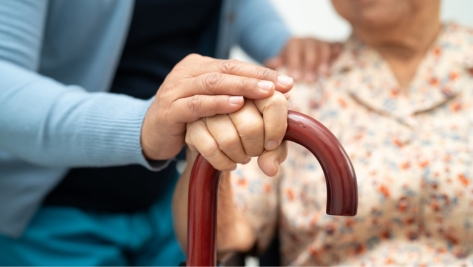*Disclaimer: The information on the Anthony Gold website is for general information only and reflects the position at the date of publication. It does not constitute legal advice and should not be treated as such. It is provided without any representations or warranties, express or implied.*
Osseointegration in injury compensation claims
Amanda Hopkins, Partner| Injury & Medical Claims | Personal Injury | October 9, 2019

The basic principle of compensation for a personal injury is, as far as possible, to put the claimant back into the same position had the accident not have happened. It sounds simple. It is not. The more severe the injury, the more experienced the solicitors should be in dealing with such claims. That experience should be on the part of both the claimant and defendant solicitors. I cannot stress how important early rehabilitation is and putting in place a package which suits the claimant’s needs. An experienced defendant solicitor will know the financial benefit this will ultimately have for their insurer client.
Every nuance and permutation of how a person’s injury has impacted, is impacting and will impact upon their life has to be considered. The claimant, their family and their environment have to be well understood by the legal team and the experts engaged. One size does not fit all.
In a catastrophic claim (and in less severe cases) where a full recovery is not achievable, putting a claimant back into the same position as before an accident is an impossible task. Financial compensation cannot restore brain function, it cannot enable the paralysed to walk, it cannot stimulate regrowth of the missing limb. Advances in science and medicine which lessen the impact of these significant, life-changing injuries assist us greatly. One such advance in orthopaedics which is gaining momentum in recent times is osseointegration.
Osseointegration is a surgical procedure for amputees in which a metal implant is inserted into the bone of the resifual limb for an artificial limb to attach to. It differs from traditional socket prostheses, particularly in above knee and above elbow amputations, in that the prosthesis is much more stable and there is no skin breakdown (often a barrier to being able to use a socket prosthesis). Together this provides a greater quality of life for the recepient in all aspects of daily living activities. It can be the difference between a person being confined to a wheelchair and returning to their pre-accident life. See here for an overview of what osseointegration involves.
For many years this form of treatment was considered to be experimental but it is now beginning to enter the mainstream of treatment for amputees. Unfortunately, it is not yet available on the NHS and for most this makes it inaccessible. There are private clinics in the UK which offer this form of surgery and there is the option of travelling to Europe and beyond for more choice. A patient may also be “lucky” and involved in a research project funded by the NHS. Increasingly, osseointegration is also being considered as part of the rehabilitation of claimants in personal injury cases.
Not evenyone is suitable. This is intrustive surgery; there are risks (infection, rejection of the implant, the need for revision surgery) and it is costly (the surgery alone can cost up to £80,000). Each candidate must undergo a cost/benefit analysis which means many vulnerable and older clients will be immediately discounted. Children and adolescents would automatically be excluded as it is not possible to implant into bones which have not reached maturity. With the recovery periods, montitoring and aftercare the treatment can run into hundreds of thousands of pounds. Traditionally the defendant solicitor and insurer client would baulk at such cost. But in a time when the benefits of providing tailor made, high quality rehabilitation packages is now just as obvious to the defendant as it is to the claimant, osseointegration is becoming a viable option for the claimant. The forward thinking insurer will know that the cost of such treatment would be offset by the significant reduction in loss of earnings and cost of care which inevitably form the lion’s share of personal injury compensation.
Let’s not forget that in amongst all those calculations is the claimant, the person who is being given the best chance to get back the life they had before the accident. The procedure is in its relative infancy but with time I hope the research and resources areput into making this an option which becomes as routine as hip and knee replacements.
Please note
The information on the Anthony Gold website is for general information only and reflects the position at the date of publication. It does not constitute legal advice and should not be treated as such. It is provided without any representations or warranties, expressed or implied.

Related Insights
- July 30, 2019
The Effects of Mild Traumatic Brain Injury and How to Claim Compensation
- April 5, 2019
Dishonesty in personal injury claims
- November 21, 2018
YAH v Medway: psychiatric injury claim by the mother of an injured baby
Our Latest Injury & Medical Claims Insights
- October 6, 2025
Jess’s Rule – a welcome reminder to reconsider persistent symptoms
- September 26, 2025
Intermediate track injury claims: the rise of early settlement offers
- August 26, 2025
Anthony Gold Solicitors welcome Helen Whittam as a new Support and Rehabilitation Coordinator in the Injury and Medical Claims Team
- August 19, 2025
Contributory negligence and children
- August 13, 2025
Video: From tragedy to triumph – Eliezer’s journey after a life-changing accident
- July 9, 2025
What is Contributory Negligence and How Could it Affect Your Claim?
Latest Articles
View allGuide: November 7, 2025
Guide: November 7, 2025
Guide: November 6, 2025
Contact the Conveyancing team today
Contact us today
"*" indicates required fields
Contact the commercial
& civil Dispute team today
"*" indicates required fields
Contact the Conveyancing team today
Contact the Conveyancing team today
Contact the Wills, Trusts
& Estates team today
Contact the Court of
Protection team today
Contact the Employment Law team today
Contact the Clinical Negligence team today
Contact the Family & Relationships team today
Contact the Personal Injury Claims team today
Contact the leasehold & Freehold team today
Contact the Corporate & Commercial team today
Contact the housing & disputes team
"*" indicates required fields














